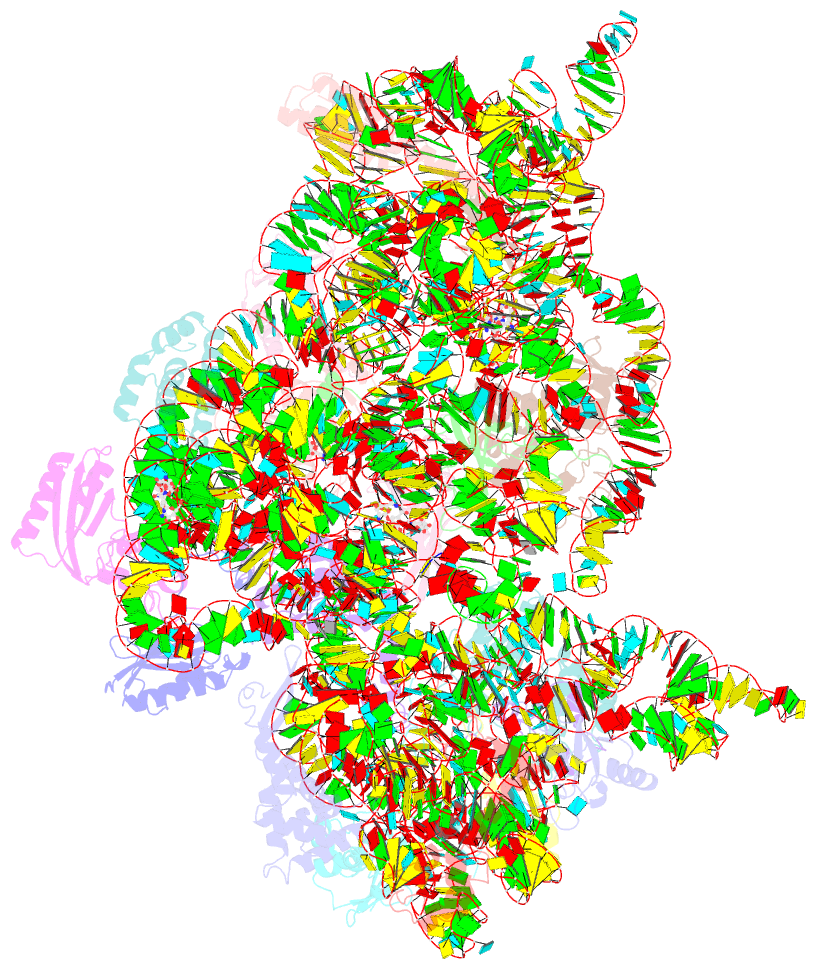Summary information and primary citation
- PDB-id
- 6cao; SNAP-derived features in text and JSON formats;
DNAproDB
- Class
- ribosome
- Method
- X-ray (3.45 Å)
- Summary
- Structure of the ribosomal decoding complex at ambient temperature
- Reference
- Dao EH, Poitevin F, Sierra RG, Gati C, Rao Y, Ciftci HI, Aksit F, McGurk A, Obrinski T, Mgbam P, Hayes B, De Lichtenberg C, Pardo-Avila F, Corsepius N, Zhang L, Seaberg MH, Hunter MS, Liang M, Koglin JE, Wakatsuki S, Demirci H (2018): "Structure of the 30S ribosomal decoding complex at ambient temperature." RNA, 24, 1667-1676. doi: 10.1261/rna.067660.118.
- Abstract
- The ribosome translates nucleotide sequences of messenger RNA to proteins through selection of cognate transfer RNA according to the genetic code. To date, structural studies of ribosomal decoding complexes yielding high-resolution data have predominantly relied on experiments performed at cryogenic temperatures. New light sources like the X-ray free electron laser (XFEL) have enabled data collection from macromolecular crystals at ambient temperature. Here, we report an X-ray crystal structure of the Thermus thermophilus 30S ribosomal subunit decoding complex to 3.45 Å resolution using data obtained at ambient temperature at the Linac Coherent Light Source (LCLS). We find that this ambient-temperature structure is largely consistent with existing cryogenic-temperature crystal structures, with key residues of the decoding complex exhibiting similar conformations, including adenosine residues 1492 and 1493. Minor variations were observed, namely an alternate conformation of cytosine 1397 near the mRNA channel and the A-site. Our serial crystallography experiment illustrates the amenability of ribosomal microcrystals to routine structural studies at ambient temperature, thus overcoming a long-standing experimental limitation to structural studies of RNA and RNA-protein complexes at near-physiological temperatures.





